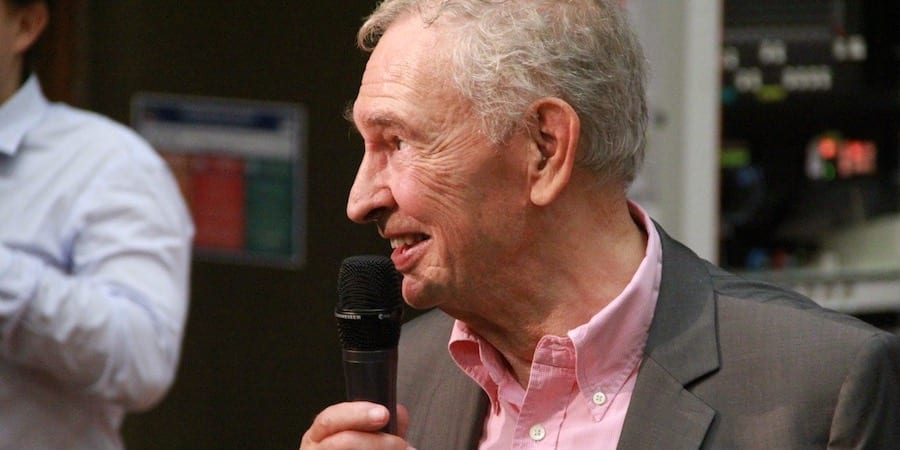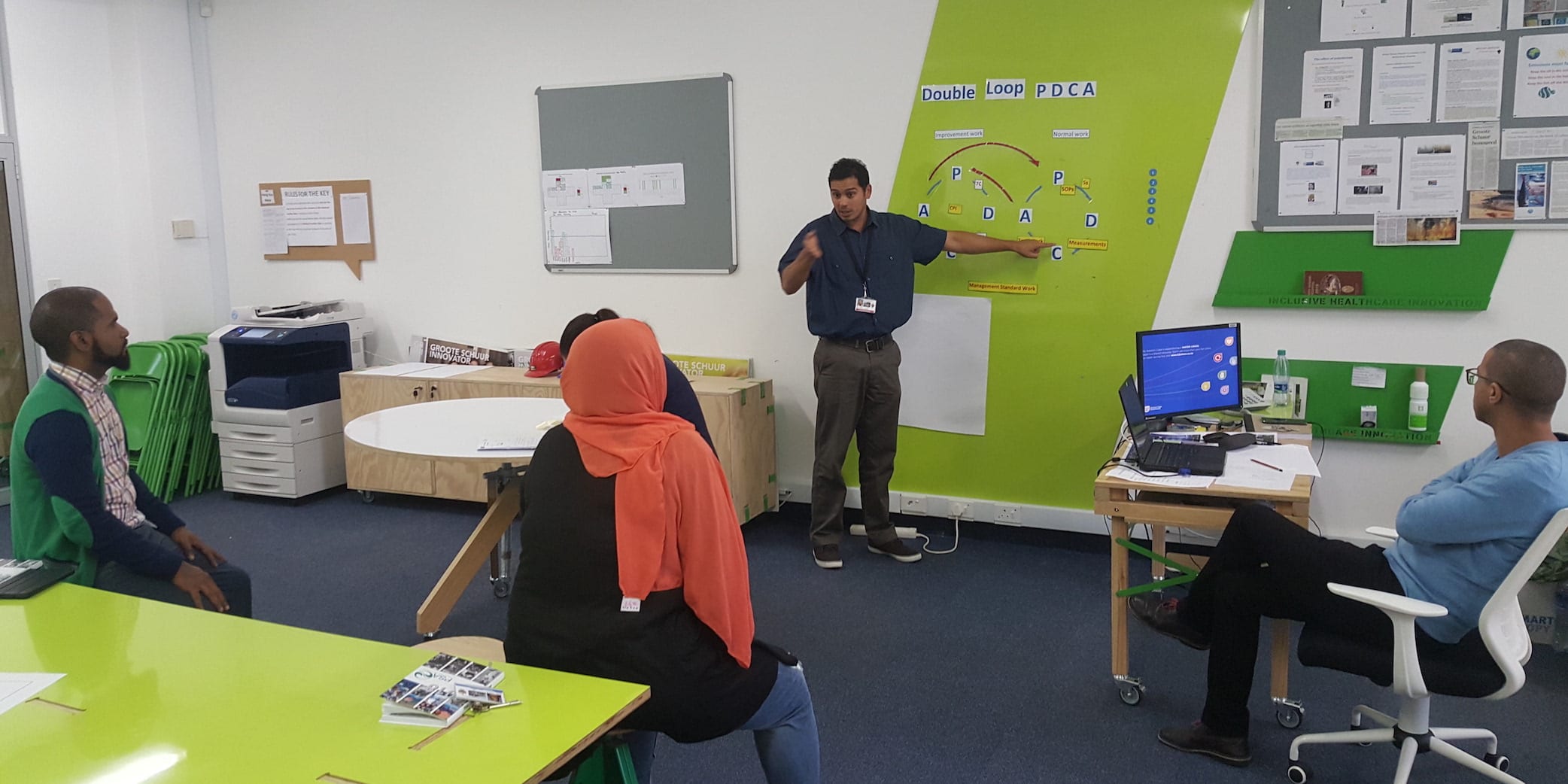
An interview with Michael Ballé on lean as a strategy
INTERVIEW – In this interview, Michael Ballé discusses lean strategy, how to unearth problems, and the best (or only) way to initiate a lean transformation.
Interviewee: Michael Ballé, author, executive coach and co-founder of Institut Lean France
Planet Lean: The world is an increasingly scary place for businesses. Why is lean best placed to provide them with the competitiveness they need to survive?
Michael Ballé: The basic premise of lean is that everyone is doing their job fine but a few misguided habits born out of deeper misconceptions can stop people – both individually and collectively as a company – from reaching their full potential. Lean is a method to discover these misconceptions through hands-on exercises. In practice, this has two visible benefits:
- Supporting the talent and passion of people striving to find a better way to do every job is the best way to guarantee day-to-day effectiveness and responsiveness;
- Learning that results from confronting leadership challenges to team-level kaizen is more likely than any other approach to discover the areas that need to be explored. Learning to learn is about learning what we need to learn – not just what we'd like to.
Practicing lean on a daily basis enhances both the customer focus and mindful work necessary to be more profitable now, as well as face the deeper challenges posed by a disruptive market.
PL: Your book with Dan Jones, Jacques Chaize and Orry Fiume is coming out in the spring. It's entitled Lean Strategy. How can organizations make lean their strategy?
MB: First, leaders need to understand what a lean strategy means, which is the main topic of our book. In a traditional sense, the leader intuits a grand vision and expresses it as high-level do-or-die changes. These changes are then implemented through projects, systems and change management. Front-line staff is left to deal with the very practical – and often personally disruptive – problems these changes create. In many cases, disciplined execution runs into the reality of day-to-day friction where value is added, and many of these programs deliver little else than shareholder enthusiasm (important) and operational disasters (which tend to catch up with the leaders sooner or later).
A lean strategy is completely different. First, the leader goes to the gemba to support local teams in fixing obvious problems. This allows him or her to figure out which problems are easy, which are hard, and which really need facing. The leader then defines these high-level problems in a way that everyone in the organization can understand and asks each and every team to come up with the local changes necessary to start solving these problems on a case-by-case basis. To support the process, the leader learns and then teaches the lean learning system developed by Toyota to give teams the means to learn as they do.
A lean strategy has the two very large advantages. First of all, it pushes us closer to facts and less driven by the usual motivated thinking (picking a conclusion and then reasoning it backwards to make it sound solid) often found in corporate boardrooms. Second, it is people-centric: problems are framed based on what people encounter on the gemba, and solutions are formed with the people themselves. This togetherness, and the refusal to separate strategy from execution, is what makes lean strategies more sensible and robust.
PL: In the lean world, we also talk about problem solving, but problem finding is surely the first step towards problem solving. What kind of managerial culture do we need to develop in our organizations in order to successfully unearth problems?
MB: Yes, this is what we discovered from discussing with Toyota sensei on the gemba. Certainly, problem solving is important, but seeing problems and figuring out what the right problems to solve are – what Toyota calls "problem awareness" – is just as critical to success. Smartly solving the wrong problems is not going to get us very far.
To a large extent, the lean system of value analysis/value engineering, just-in-time and jidoka, is a set of practical, visual techniques to uncover problems. Once problems are revealed, management must step in, and both support the teams in solving their problems and learn from these resolutions to improve higher-level procedures. It's a controlled change method that starts with kaizen and ends up with strategy – and the other way around: the "catchball" process in hoshin kanri.
Obviously, if problems are our basic material to improve, the culture must be one that encourages curiosity towards problems and discourages blaming people – each problem is an opportunity to learn if and only if management learns to listen carefully (and look hard without seeking culprits) and to accept unfavorable information with equanimity rather than shoot the messenger.
It is also a culture in which management has to be interested in creating space to think and not just to do, deepening the thinking and not just executing action plans. This is quite a shift in many organizations that believe that getting people to work harder is the key to success, rather than understanding only people themselves can learn to work smarter.
PL: What is the best way to initiate a lean transformation? Management "intervention" or small front-line initiatives? In your gemba walks, which of the two seems to be more common?
MB: Ouch. So far, I have not come across a successful lean transformation that did not start with a meeting between a CEO and a sensei (a "master" in the lean tradition, with a clear lineage of teachers going back to Taiichi Ohno). This is quite obviously a bottleneck in the spread of "real lean" – but why should lean be easy? After all, lean is a method to seek competitive edge by developing yourself and others – looking for the right sensei is part of the learning journey.
Once you've found your sensei, he or she will take you to the gemba and give you specific exercises or point to detailed problems to solve. As I described in The Gold Mine trilogy, first you learn to lead kaizen firsthand (The Gold Mine) then to create the management system to support kaizen day-to-day (The Lean Manager), and finally to grow the right kind of leaders who will bootstrap the system to learn and evolve (Lead With Respect).
PL: You are holding a Masterclass at Nyenrode Business University in March. What can attendees expect to learn?
MB: There is a knack to lean thinking. If you improve quality, flexibility and introduce diversity in your operations through kaizen with the employees themselves, first, you'll see the low-hanging fruit of increased sales, margin and cash by simply "clearing the window." Then, practicing the lean system will reveal deeper problems and if you, as a leader, have the curiosity, grit and human touch to pursue them, you will discover how to continuously adapt your organization to its customers and to create move value whilst generating less waste. In the two-day masterclass at Nyenrode in March, I'll try to show the participants how it's done and where the real gains of lean lie, to better prepare them to what to expect from lean and what attitude to adopt towards lean learning. Should be fun!
THE INTERVIEWEE

Read more



FEATURE - We talk about “changing our mindset” all the time, but do we really understand what this means in the context of our lean transformation? This two-part article tries to understand what the spirit of lean really is.


INTERVIEW - In our search for the perfect solution, we often seem to ignore the user's needs. Jeff Gothelf explains why this is nonsense and what lies at the heart of the Lean UX software development methodology.


INTERVIEW – Having started to explore TPS in the mid-1970s, Freddy Ballé is one of the great pioneers of our movement. Here, he shares what he learned about Toyota over the past 40 years.


FEATURE – How “Double-Loop PDCA” was discovered due to a problem with implementing a lean daily management system in a South African hospital.

